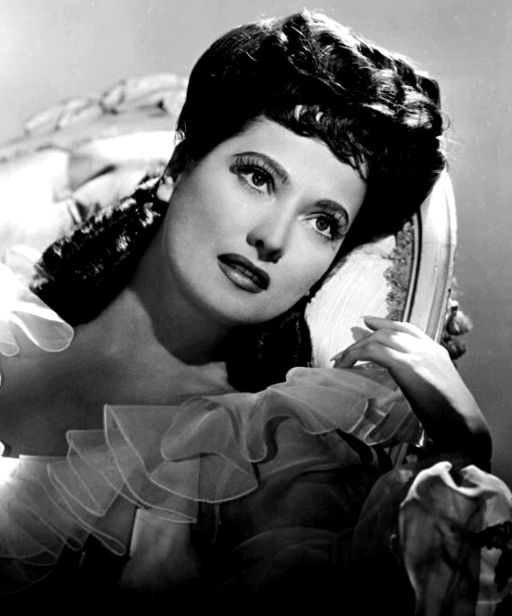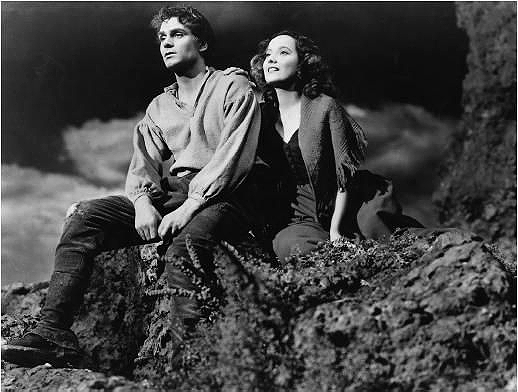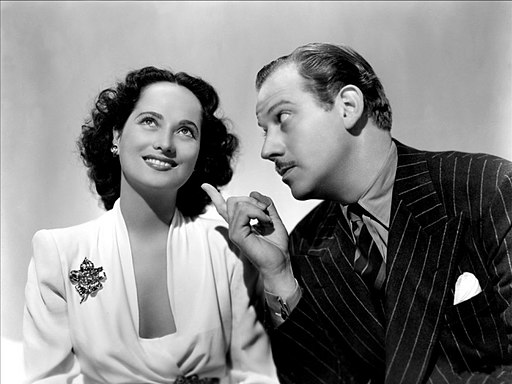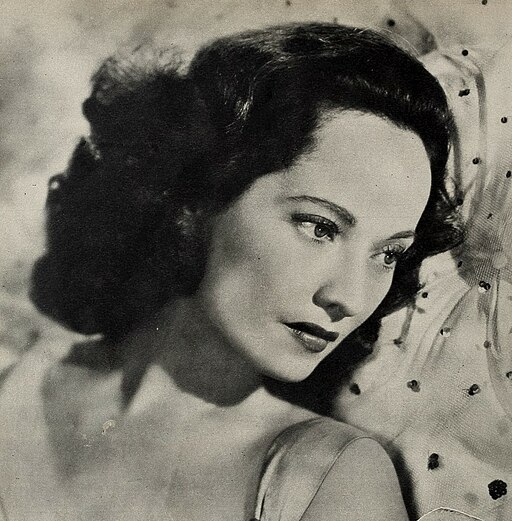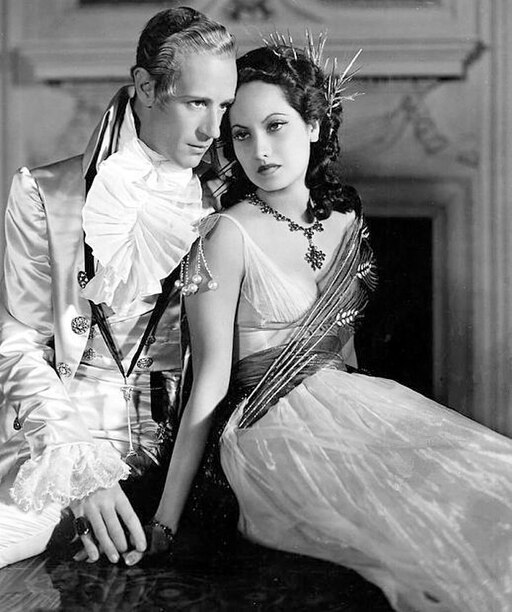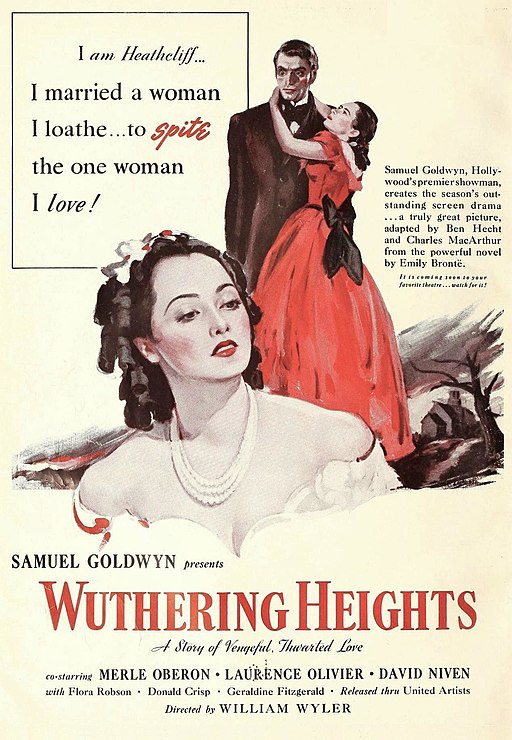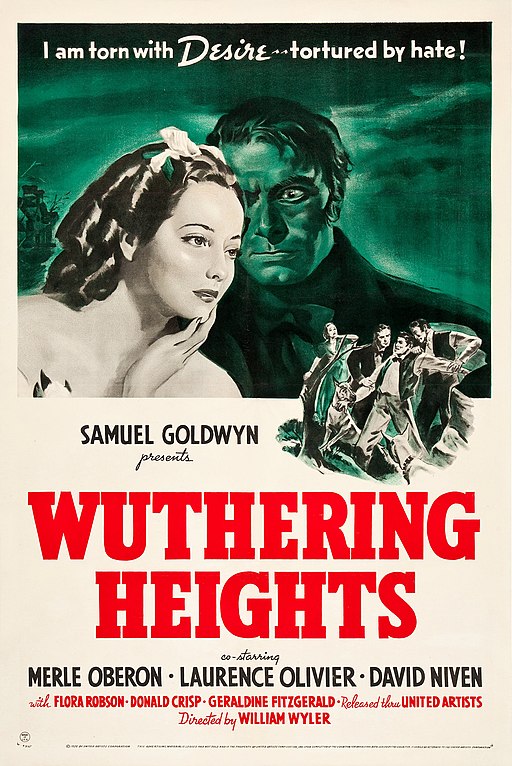Merle Oberon
back| Full Name | Estelle Merle O'Brien Thompson |
| Stage Name | Merle Oberon |
| Born | 19 February 1911 |
| Birthplace | Bombay (now Mumbai), British India |
| Died | 23 November 1979 |
| Buried | Forest Lawn Memorial Park, Glendale, California, USA |
| Married to | Alexander Korda (1939–1945) - Lucien Ballard (1945–1949) - Bruno Pagliai (1957–1973) - Robert Wolders (1975 until her death in 1979) |
| Children | She adopted two children with Bruno Pagliai: Francesca and Bruno |
| Notable films | The Scarlet Pimpernel (1934) - Wuthering Heights (1939) - The Divorce Lay X (1938) - That Uncertain Feeling (1941) |
Merle Oberon
Hollywood’s Golden Age Glamour Girl
Merle Oberon's career spanned from the 1930s through the 1970s, during which she appeared in over 30 films. Her performance in "Wuthering Heights" opposite Laurence Olivier earned her critical acclaim and a nomination for an Academy Award for Best Actress. Oberon's exotic beauty and sophisticated presence made her one of the most glamorous stars of her time.
Related
Merle Oberon (1911 – 1979)
Biography and Career Overview
Merle Oberon's life story reads like a script from one of her own classic films, filled with intrigue, hardship, and triumph. Born Estelle Merle O'Brien Thompson on February 19, 1911, in Bombay (now Mumbai), British India, her early life was marked by complexity and mystery. The daughter of a British father and a mother of Sinhalese and Māori ancestry, Oberon faced social stigma due to her mixed heritage. This challenge would shape her personal narrative and professional choices throughout her life.
Early Years and Ascension to Stardom: Merle's journey to stardom began with a move to London in 1928, where she pursued acting with a fierce determination. To escape the prejudices of her time and secure a place in the burgeoning film industry, she changed her name and crafted a new backstory, claiming to be from Tasmania, Australia. Her exotic beauty and talent quickly caught the attention of filmmakers, and she made her film debut in the British movie "The Three Passions" (1928). However, it was her meeting with the influential film producer Alexander Korda that would truly ignite her career. Korda became mesmerized by Oberon, casting her in leading roles and eventually marrying her in 1939. Under his guidance, Oberon achieved international fame, notably starring in "The Private Life of Henry VIII" (1933) and "The Scarlet Pimpernel" (1934).
Hollywood Success: Oberon's career took her across the Atlantic to Hollywood, where she became a celebrated star. Her performance in "Wuthering Heights" (1939) opposite Laurence Olivier earned her an Academy Award nomination for Best Actress. Throughout the 1930s and 1940s, she was a fixture in both British and American cinema, known for her roles in films like "These Three" (1936), "The Divorce of Lady X" (1938), and "That Uncertain Feeling" (1941).
Personal Life and Marriages: Oberon's personal life was as eventful as her on-screen career. After her marriage to Korda ended in 1945, she married cinematographer Lucien Ballard. Ballard developed a special lighting technique to hide a scar Oberon had from an earlier car accident, showcasing the lengths to which she went to maintain her screen image. This marriage also ended in divorce, and Oberon later married Italian industrialist Bruno Pagliai, adopting two children with him. Her final marriage was to actor Robert Wolders, lasting until her death.
Passions and Interests: Beyond her film career, Oberon was known for her exquisite taste and elegance. She was a passionate collector of art and an accomplished hostess, famous for her glamorous parties attended by the elite of Hollywood and international society. Her homes were showcases of her refined aesthetic and love for beauty.
Death and Legacy: Merle Oberon's life came to a premature end on November 23, 1979, in Malibu, California. She died of a stroke at the age of 68. Her passing was mourned by fans and colleagues alike, marking the loss of a true Hollywood legend. Oberon is buried at Forest Lawn Memorial Park in Glendale, California, leaving behind a legacy of classic films and a life story marked by resilience, transformation, and indelible talent.
India's Forgotten Hollywood Star:
Notable Movies featuring Merle Oberon:
1930s
- The Private Life of Henry VIII (1933): Oberon plays Anne Boleyn in this historical drama focusing on the marriages of King Henry VIII, played by Charles Laughton.
- The Scarlet Pimpernel (1934): Set during the Reign of Terror following the start of the French Revolution, Oberon stars as Lady Marguerite Blakeney, opposite Leslie Howard’s Sir Percy Blakeney, who leads a double life as a daring rescuer of French aristocrats.
- The Dark Angel (1935): A romantic drama where Oberon's character, Kitty Vane, is torn between two men (played by Fredric March and Herbert Marshall) against the backdrop of World War I.
- These Three (1936): This drama, based on Lillian Hellman's play "The Children's Hour," features Oberon in a story about a malicious student who spreads a lie about her teachers.
- Wuthering Heights (1939): Oberon stars as Cathy in this classic adaptation of Emily Brontë’s novel, opposite Laurence Olivier’s Heathcliff, telling the tragic tale of their doomed love and revenge.
1940s
- The Divorce of Lady X (1938): A romantic comedy where Oberon plays Leslie, a woman who spends the night in a lawyer's hotel suite due to a lack of rooms, leading to complications and comedic entanglements.
- That Uncertain Feeling (1941): Oberon portrays Jill Baker, a woman suffering from hiccups and marital dissatisfaction, who becomes involved in a love triangle.
- Lydia (1941): Oberon is Lydia MacMillan, a woman who recounts her multiple love affairs and the one love she could never have, in this romantic drama.
- The Lodger (1944): In this horror film based on Jack the Ripper, Oberon plays Kitty Langley, an entertainer who becomes a target for the mysterious lodger (Laird Cregar).
1950s
- Berlin Express (1948): A post-war suspense film in which Oberon's character, Lucienne, joins forces with other passengers to thwart a plot in the ruins of post-war Germany.
- Desirée (1954): Oberon takes on the role of Empress Joséphine opposite Marlon Brando’s Napoleon in this historical drama, focusing on Napoleon's relationship with Desiree Clary.
1960s and Beyond
- Of Love and Desire (1963): Oberon plays a wealthy woman involved in a complicated love story set in Mexico.
- The Oscar (1966): A drama about the dark side of Hollywood, where Oberon makes a cameo appearance as herself, highlighting her enduring status in the film industry.
Analysis of Merle Oberon’s Acting Style:
Merle Oberon's acting style was characterized by an enchanting blend of elegance, emotional depth, and versatility, which allowed her to excel in a wide range of roles, from romantic leads to complex, dramatic characters. Her performances were marked by a sophisticated presence, nuanced expressions, and the ability to convey the inner turmoil or passion of her characters subtly yet powerfully.
Oberon's on-screen persona often embodied a kind of refined grace, making her a perfect fit for roles that demanded a sense of aristocracy or aloof beauty. However, beneath this poised exterior, she was adept at revealing vulnerability, strength, and a wide range of emotions, drawing audiences into the psychological complexity of her characters.
In romantic dramas like "Wuthering Heights," Oberon's portrayal of Cathy showcased her ability to navigate the intricacies of love, longing, and tragedy, capturing the ethereal nature of her character while grounding her in genuine emotion. Her chemistry with co-stars, such as Laurence Olivier, added a palpable tension and depth to her performances, making their on-screen relationships compelling and believable.
Oberon's versatility shone through in her ability to shift between genres seamlessly. In comedies like "The Divorce of Lady X," she displayed a lighter touch, delivering lines with a wit and timing that provided a counterbalance to her more dramatic roles. This adaptability allowed her to maintain a successful career across different cinematic contexts, including the transition from British to American cinema.
Her acting was also marked by an understated approach, often relying on small gestures, glances, or a softly spoken word to convey complex emotions or pivotal moments in the narrative. This subtlety was a hallmark of her performances, distinguishing her in an era when more overt expressions of emotion were common on screen.
Despite the glamour and beauty that Oberon brought to her roles, there was always a sense of something more profound, a hint of the struggles she faced off-screen, including her efforts to navigate Hollywood's expectations and her own complex identity. This underlying resilience and determination seemed to inform her performances, adding layers to her portrayal of characters who were often more than met the eye.
Merle Oberon's legacy as an actress lies in her ability to blend grace with grit, bringing depth and dignity to her roles and leaving an indelible mark on the golden era of Hollywood cinema. Her performances continue to captivate audiences, serving as a testament to her talent and the timeless appeal of her acting style.
Awards and Recognition:
Merle Oberon's career in Hollywood and British cinema was marked by notable performances, but when it comes to awards and nominations, her recognition by major awarding bodies was relatively limited, reflecting perhaps the competitive nature of the industry during her era as well as the type of roles and films that tended to receive awards recognition at the time.
The most prominent acknowledgment of Oberon's acting talents came from the Academy Awards:
Academy Awards (Oscars)
Nominated: Best Actress in a Leading Role for "The Dark Angel" (1935)
This nomination for "The Dark Angel" showcased Oberon's ability to captivate audiences and critics alike with her performance in a leading role, playing a character caught in a tragic love triangle, which highlighted her emotional depth and dramatic range.
Despite the scarcity of formal accolades, Oberon's contributions to cinema were recognized in other ways. She was celebrated for her elegance, beauty, and the sophisticated presence she brought to the screen, which helped to define the glamour of Hollywood's golden era. Oberon's performances in films such as "Wuthering Heights" and "The Scarlet Pimpernel" remain iconic, contributing to her enduring legacy in the film industry.
Movies with Merle Oberon:
1930s
- The Three Passions (1928)
- A Warm Corner (1930)
- Never Trouble Trouble (1931)
- Fascination (1931)
- Service for Ladies (1932)
- Wedding Rehearsal (1932)
- Men of Tomorrow (1932)
- The Private Life of Henry VIII (1933)
- The Battle (1934)
- The Broken Melody (1934)
- The Scarlet Pimpernel (1934)
- Folies Bergère de Paris (1935)
- The Dark Angel (1935)
- These Three (1936)
- Beloved Enemy (1936)
- I, Claudius (1937) [Unfinished]
- The Divorce of Lady X (1938)
- Over the Moon (1939)
- Wuthering Heights (1939)
1940s
- The Lion Has Wings (1939)
- 'Til We Meet Again (1940)
- That Uncertain Feeling (1941)
- Affectionately Yours (1941)
- Lydia (1941)
- Stage Door Canteen (1943)
- Forever and a Day (1943)
- First Comes Courage (1943)
- The Lodger (1944)
- Dark Waters (1944)
- A Song to Remember (1945)
- This Love of Ours (1945)
- Night in Paradise (1946)
- Temptation (1946)
- Berlin Express (1948)
1950s and Beyond
- 24 Hours of a Woman's Life (1952)
- All Is Possible in Granada (1954)
- Desirée (1954)
- Deep in My Heart (1954) [Cameo]
- Of Love and Desire (1963)
- The Oscar (1966)
- Hotel (1967)
- Interval (1973)

